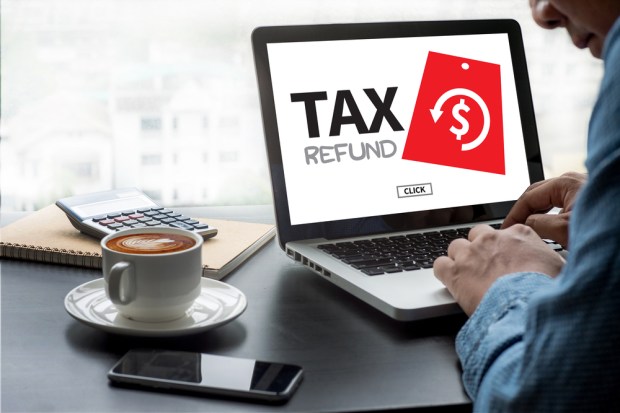Death And Taxes: One Is Becoming Much More Digital

After the holiday season comes tax season — everyone’s favorite time — but at least the payment of taxes, along with the tax refund process, promises to become even more digital this year. And digital payers are striving to win more business from tax filers this year.
According to various estimates, it can take three to four weeks to get a tax refund from the IRS, while Americans who take the Earned Income Tax Credit or the Additional Child Tax Credit won’t get their refunds until Feb. 27. But there is some good news: Despite the government shutdown, tax refunds will still be paid, according to the most recent reports.
Rise of Quicker Payments
But consumers are increasingly demanding quicker — even instant — payments in all types of situations, from wages to disbursements. Further evidence of that comes from the new PYMNTS Disbursements Tracker. “B2C disbursements account for more than 3.5 billion payments valued at $10.7 trillion across 29 disbursement types, and 65 percent of consumers prefer instant payouts for these disbursements,” reads the study. “Tax refunds and government assistance were the most common disbursement use cases, while store and brand incentives, credits and rebates were the next most popular.”
The report also says that within five years, the market value of instant and real-time payments will hit a project value of about $25.9 billion.
In January, some 15 million tax filers are expected to begin the process of getting a tax refund, according to which estimate you believe.
New Products
Those early tax filers, though, often must wait months to gain access to their tax refunds. Recently, though — in another demonstration of the move from paper-based processes and further into digital for the tax preparation industry — tax prep services like H&R Block are getting creative by offering qualified customers instant refund advance loans. These services, according to Jim Koger, H&R Block’s vice president of corporate operations, allow the company to stand apart from the competition and help customers get earlier access to their funds, thereby remaining on steady financial footing, according to previous PYMNTS research.
According to the IRS, filers are already a mostly digital bunch. About 92 percent of the 141.5 million federal tax returns submitted last year were filed digitally. That’s up from about 59 percent in 2008. “As of May 2018, over 85,297,000 million taxpayers have received faster federal tax refunds via direct bank deposits into bank accounts through electronic bank transfers. The average tax refund received by direct deposit is $2,940,” the federal tax agency said.
International Progress
Tax administration is going digital in other countries besides the U.S., especially when it comes to value-added taxes and taxes imposed on goods and services, which are often the first taxes to go digital in any given country, according to a recent report. In Brazil, for instance, “companies selling products in that market must send each invoice electronically to the government for validation before shipping goods, and companies purchasing goods in Brazil must check the electronic invoice with the government before receiving them,” that report said. “In Argentina, taxpayers have been required to submit VAT returns directly through the tax authority’s web page since July 2015.”
More digital development is on the table.
“Technologies that enable VAT and GST digitization will likely, sooner or later, enable business income tax systems as well,” the report said. “Brazil again provides an example of this process, as electronic submissions support that country’s consumption tax and income tax systems.”
Nothing endures like death and taxes – but when it comes to the latter, digital processes are quickly gaining more dominance over the various parts of the operation.
